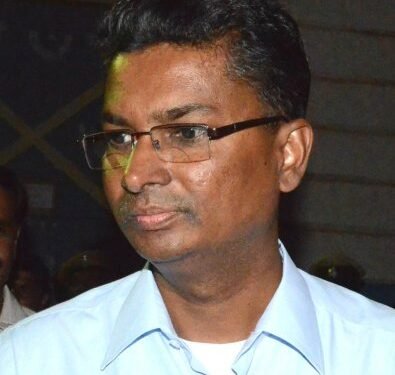With the aim of providing enhanced accessibility to administration offices, Satish Jarkiholi, the appointed minister for Belagavi, has sparked controversy by announcing the government’s proposal to partition the district for administrative purposes.
In his address to the public on Independence Day, following the flag hoisting ceremony, Jarkiholi highlighted that the proposed division aims to facilitate improved accessibility to administration offices, strategically positioning them in closer proximity to the people.
At present, individuals residing in Athani and Raibag areas undertake approximately a 150-kilometer journey to reach the deputy commissioner’s office situated in Belagavi. “To tackle this concern and enhance the effectiveness of administration, we have put forth the idea of dividing the district,” he elaborated.
A number of Congress MLAs, including representatives from Bailhongal, Ramdurga, and Savadatti, who were notably against a comparable proposal in 1997, have now expressed their determination to seek public input before arriving at any conclusion. Mahantesh Koujalagi, the Bailhongal MLA, affirmed, “Should the public voice their opposition, I will also participate in the protest until the notion of division is withdrawn.”
Conversely, Savadatti MLA Viswas Vaidya and Ramdurga MLA Ashok Pattan, closely aligned with Jarkiholi, have outlined their intention to engage in discussions with the chief minister and to proceed based on the sentiments of their respective taluks’ populace. It is noteworthy that in 1997, the residents of Savadatti, Bailhongal, and Ramdurga resisted amalgamation with Gokak, choosing instead to remain integrated within Belagavi.
Amidst this, Kannada organizations in Belagavi have issued a resolute warning of a statewide protest (WHEN?) in opposition to the government’s decision, holding firm until the border dispute with Maharashtra is conclusively settled in the Supreme Court.
Ashok Chandaragi, spearheading the Kannada Organisations’ Action Committee in Belagavi, stressed that the government should place greater emphasis on upholding the state’s unity rather than hastily enacting administrative alterations that might result in unforeseen repercussions.
Chandaragi raised queries about the government’s rationale behind the proposed division, particularly considering the efficient management of the district’s challenges by both present and past deputy commissioners and superintendents of police. “If the entire state can be efficiently governed by a single chief minister, then deputy commissioners and SPs, who are seasoned IAS and IPS officers, should undoubtedly be competent in overseeing a district with a population of approximately 3.5 million,” he remarked.
Sayyad Mansur, a notable member of the Congress, conveyed apprehensions about potential repercussions on the party’s reputation if it pursued the district bifurcation agenda. “The decision taken by the Siddaramaiah government appeared to be akin to disturbing a beehive, as it proved detrimental not only to Kannadigas but also to the government itself,” he noted.
Deepak Gudadanatti, serving as the Belagavi district president of Karnataka Rakshana Vedike, echoed concerns that the division might inadvertently empower regions dominated by Marathi speakers, potentially igniting demands for integration into Maharashtra.
Reflecting on past instances when the Maharashtra Ekikaran Samiti (MES) achieved success in local elections and pushed for incorporating Marathi-speaking areas into Maharashtra, Gudadanatti cautioned that MES’s victories in local governance could bolster Maharashtra’s claims in the ongoing border dispute with Karnataka.
“The late Chief Minister J H Patel made a conscious decision against dividing the Belagavi district, as he wanted to prevent any advantage to pro-Maharashtrian factions. Patel’s motivation was rooted in his concern that the Maharashtra Ekikaran Samiti (MES) might exploit victories in local elections to advocate for merging with Maharashtra,” he explained.
During J H Patel’s tenure, specific administrative divisions were implemented: Athani, Chikkodi, and Raibag taluks were slated for the proposed Chikkodi district, while Gokak, Savadatti, Ramdurga, and Bailhongal taluks were earmarked for the Gokak district. Meanwhile, Belagavi, Khanapur, and Hukkeri taluks remained part of the Belagavi district.
On September 20, 1997, the proposal was retracted due to widespread protests, with the stipulation that the integrity of the Belagavi district would be maintained until the border dispute with Maharashtra was conclusively settled in the Supreme Court. Despite subsequent administrations under Patel’s guidance exhibiting a commitment to the state’s interests, the current administration under Siddaramaiah’s leadership has reopened the discussion.
Amid a sequence of electoral setbacks, the Maharashtra Ekikaran Samiti (MES) has steadfastly clung to its unwavering goal since 1956: the integration of Marathi-speaking areas within Karnataka into Maharashtra. The MES has also advocated for the division of the district, strategically aiming to regain its political influence.
Vikas Kalghatagi, the spokesperson for MES, elucidated their intentions, stating, “We envision a broader presence across multiple Gram Panchayats and Taluk Panchayats, enabling us to administer using our language. This entails access to official documents in our language, fulfilling a long-standing demand of ours.”





















